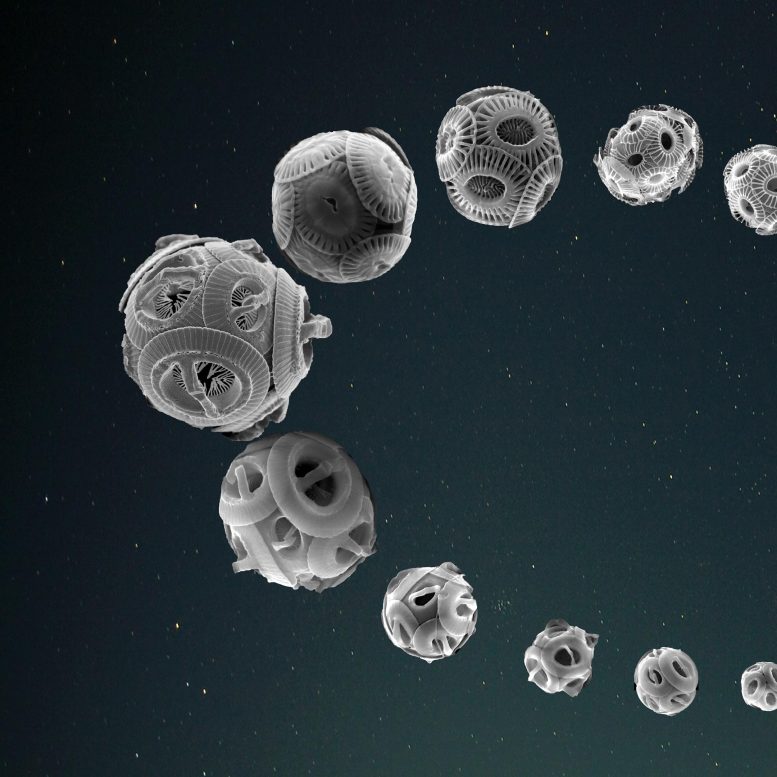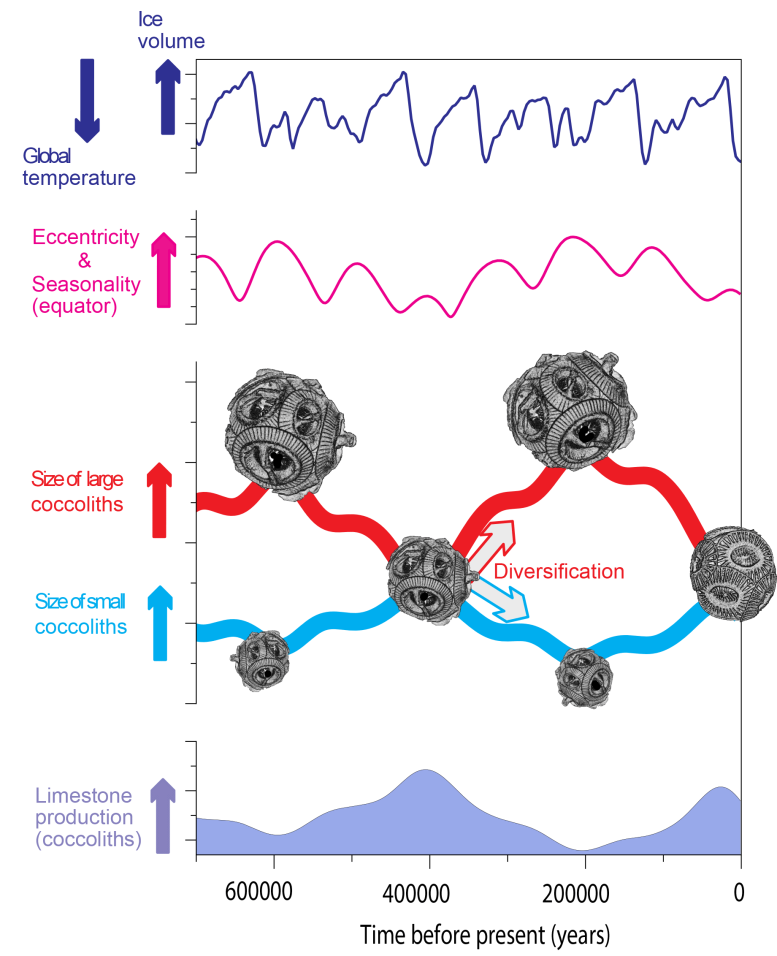
Variations in Earth’s orbit have influenced the evolution of coccolithophores.
Coccolithophores are microscopic algae that form tiny limestone plates, called coccoliths, around their single cells. The shape and size of coccoliths varies according to the species. After their death, coccolithophores sink to the bottom of the ocean and their coccoliths accumulate in sediments, which faithfully record the detailed evolution of these organisms over geological time.
A team of scientists led by CNRS researchers[1] show, in an article published in Nature on the 1st of December 2021, that certain variations in Earth’s orbit have influenced the evolution of coccolithophores. To achieve this, no less than 9 million coccoliths, spanning an interval of 2.8 million years and several locations in the tropical ocean, were measured and classified using automated microscope techniques and artificial intelligence.

Coccolithophores, an important constituent of the plankton, evolved following the rhythm of Earth’s orbital eccentricity. Credit: Luc Beaufort / CNRS / CEREGE
The researchers observed that coccoliths underwent cycles of higher and lower diversity in size and shape, with rhythms of 100 and 400 thousand years. They also propose a cause: the more or less circular shape of Earth’s orbit around the Sun, which varies at the same rhythms. Thus, when Earth’s orbit is more circular, as is the case today (this is known as low eccentricity), the equatorial regions show little seasonal variation, and species that are not very specialized dominate all the oceans.
Conversely, as eccentricity increases and more pronounced seasons appear near the equator, coccolithophores diversify into many specialized species, but collectively produce less limestone. Crucially, due to their abundance and global distribution, these organisms are responsible for half of the limestone (calcium carbonate, partly composed of carbon) produced in the oceans and therefore play a major role in the carbon cycle and in determining ocean chemistry.

The diversity of coccolithophores and their collective limestone production evolved under the influence of Earth’s orbital eccentricity, which determines the intensity of seasonal variations near the equator. On the other hand, no link to global ice volume or temperature was found. It was therefore not global climate change that dictated micro-algae evolution but perhaps the opposite during certain periods. Credit: Luc BEAUFORT / CNRS / CEREGE
It is therefore likely that the cyclic abundance patterns of these limestone producers played a key role in ancient climates, and may explain hitherto mysterious climate variations in past warm periods. In other words, in the absence of ice, the biological evolution of micro-algae could have set the tempo of climates. This hypothesis remains to be confirmed.
Notes
- Based at Centre Européen de Recherche et d’Enseignement des Géosciences de l’Environnement (CNRS/Aix-Marseille Université/IRD/INRAE/Collège de France) and in collaboration with scientists from Rutgers University (USA).
Reference: “Cyclic evolution of phytoplankton forced by changes in tropical seasonality” by Luc Beaufort, Clara T. Bolton, Anta-Clarisse Sarr, Baptiste Suchéras-Marx, Yair Rosenthal, Yannick Donnadieu, Nicolas Barbarin, Samantha Bova, Pauline Cornuault, Yves Gally, Emmeline Gray, Jean-Charles Mazur and Martin Tetard, 31 November 2021, Nature.
DOI: 10.1038/s41586-021-04195-7









“Coccolithophores are microscopic algae that form tiny LIMESTONE plates, called coccoliths, around their single cells.”
Limestone is essentially a monomineralic ROCK (mineral aggregate) composed principally of the mineral calcite, with perhaps some aragonite initially, and perhaps partial conversion to dolomite in the metasomatic alterations that occur during induration resulting from heat and pressure.
I realize the primary intended audience for SciTechDaily is laymen, but it wouldn’t hurt to be technicality correct with the terms used. Readers might actually learn something.
As a former teacher, I’m all too aware that people find it difficult to unlearn things that are wrong. That is why teachers and reporters have a special responsibility to get things right the first time.